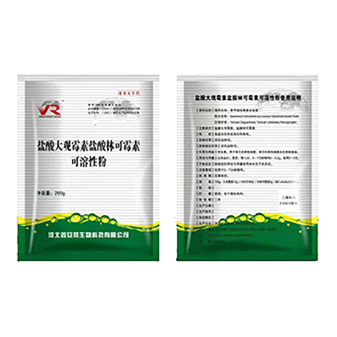- Afrikaans
- Albanian
- Amharic
- Arabic
- Armenian
- Azerbaijani
- Basque
- Belarusian
- Bengali
- Bosnian
- Bulgarian
- Catalan
- Cebuano
- Corsican
- Croatian
- Czech
- Danish
- Dutch
- English
- Esperanto
- Estonian
- Finnish
- French
- Frisian
- Galician
- Georgian
- German
- Greek
- Gujarati
- Haitian Creole
- hausa
- hawaiian
- Hebrew
- Hindi
- Miao
- Hungarian
- Icelandic
- igbo
- Indonesian
- irish
- Italian
- Japanese
- Javanese
- Kannada
- kazakh
- Khmer
- Rwandese
- Korean
- Kurdish
- Kyrgyz
- Lao
- Latin
- Latvian
- Lithuanian
- Luxembourgish
- Macedonian
- Malgashi
- Malay
- Malayalam
- Maltese
- Maori
- Marathi
- Mongolian
- Myanmar
- Nepali
- Norwegian
- Norwegian
- Occitan
- Pashto
- Persian
- Polish
- Portuguese
- Punjabi
- Romanian
- Russian
- Samoan
- Scottish Gaelic
- Serbian
- Sesotho
- Shona
- Sindhi
- Sinhala
- Slovak
- Slovenian
- Somali
- Spanish
- Sundanese
- Swahili
- Swedish
- Tagalog
- Tajik
- Tamil
- Tatar
- Telugu
- Thai
- Turkish
- Turkmen
- Ukrainian
- Urdu
- Uighur
- Uzbek
- Vietnamese
- Welsh
- Bantu
- Yiddish
- Yoruba
- Zulu
8 月 . 14, 2024 03:17 Back to list
Injectable Dosage Guidelines for Ivermectin in Goats for Effective Parasite Control
Understanding Ivermectin Injectable Dosage for Goats
Ivermectin is a widely used antiparasitic treatment that has proven effective against a variety of internal and external parasites in livestock, including goats. It's crucial for goat owners and farmers to understand the appropriate dosages to ensure the health and well-being of their animals. This article will outline key aspects of Ivermectin use, including dosage charts, administration methods, and considerations for safety.
What is Ivermectin?
Ivermectin is an anthelmintic drug that belongs to a class of medications known as avermectins. It is particularly effective against nematodes (roundworms) and ectoparasites like mites and lice. In goats, it is often used to treat conditions such as gastrointestinal parasites, lungworms, and certain external infestations.
Injectable vs. Oral Formulations
Ivermectin comes in various formulations, including oral pastes and injectable solutions. Injectable Ivermectin is preferred in certain situations, particularly when rapid action is needed or when an animal is unable to consume oral medications due to illness. The injectable form is generally administered subcutaneously (under the skin) or intramuscularly (into the muscle).
Dosage Guidelines
The appropriate dosage of Ivermectin for goats can vary based on several factors, including the age, weight, and overall health of the animal. A common guideline for injectable Ivermectin is to administer 0.2 mg/kg of body weight. This translates to approximately 1 ml of Ivermectin injectable solution per 50 kg of body weight. Nevertheless, always refer to manufacturer guidelines or consult a veterinarian for specific instructions tailored to your situation.
For practical dosage calculations, here's a simplified chart based on body weight
ivermectin for goats injectable dosage chart

- 10 kg goat 0.2 ml - 20 kg goat 0.4 ml - 30 kg goat 0.6 ml - 40 kg goat 0.8 ml - 50 kg goat 1.0 ml
Administering Injectable Ivermectin
Proper administration technique is essential for the medication's effectiveness and the animal's safety. First, ensure that you maintain a clean environment to minimize infection risk. Then, locate the appropriate site for injection—usually, the loose skin behind the ear or in the neck area for subcutaneous injections. Use a sterile syringe and needle, and inject the solution slowly to avoid causing stress or injury to the goat.
Safety Considerations
While Ivermectin is generally safe when administered correctly, it's important to observe the goats post-treatment for any adverse reactions. Some goats may experience temporary signs such as lethargy or reduced appetite. If any severe reactions occur, such as difficulty breathing or swelling, contact a veterinarian immediately.
Additionally, be mindful of any withholding periods regarding milk and meat consumption post-treatment. This period ensures that any residues of the medication have cleared the animal's system, maintaining food safety for consumers.
Conclusion
Ivermectin is a vital tool in managing parasite loads in goats and ensuring their health and productivity. Understanding proper dosing, administration techniques, and safety precautions is essential for any goat owner. Always consult a veterinarian for guidance tailored to your herd's specific needs. By following these guidelines, you can help ensure that your goats remain healthy and free from parasitic infections, contributing to their overall well-being and productivity.
-
The Power of Radix Isatidis Extract for Your Health and Wellness
NewsOct.29,2024
-
Neomycin Sulfate Soluble Powder: A Versatile Solution for Pet Health
NewsOct.29,2024
-
Lincomycin Hydrochloride Soluble Powder – The Essential Solution
NewsOct.29,2024
-
Garamycin Gentamicin Sulfate for Effective Infection Control
NewsOct.29,2024
-
Doxycycline Hyclate Soluble Powder: Your Antibiotic Needs
NewsOct.29,2024
-
Tilmicosin Premix: The Ultimate Solution for Poultry Health
NewsOct.29,2024













